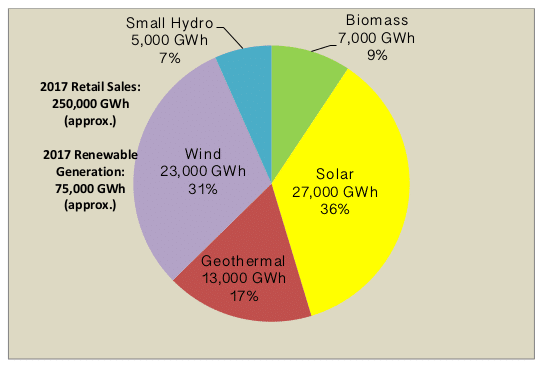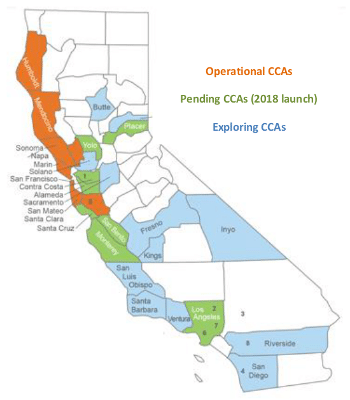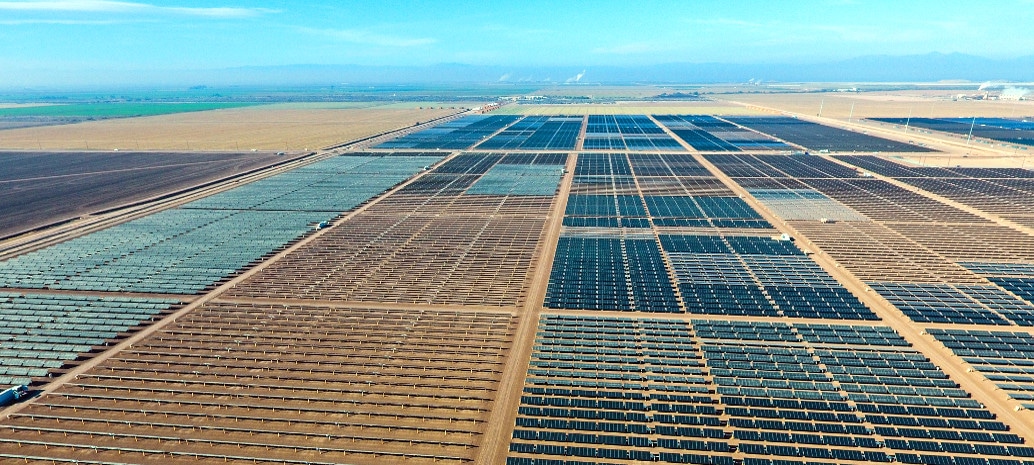If there is more than one way to skin a cat, there is definitely more than one way to present data on energy. Yesterday we brought you a report on the portion of renewable energy on California’s grid, that is the area under the jurisdiction of the California Independent System Operator (CAISO). Around the same time the California Energy Commission (CEC) released its own report on progress to reach the state’s renewable portfolio standard (RPS).
The two sets of data differ not only in that the CAISO grid does not have exactly the same boundaries as the state, but also in what counts. The data presented by CAISO and compiled by Joe Deely disaggregates large hydroelectric dams, and we included those to reach a figure that local renewables met 38% of demand. Also, CAISO does not count “behind-the-meter” solar, including rooftop installations, so if anything that 38% is conservative.
Incidentally, this is a third wrinkle to the presentation of renewable energy generation data – that it can be presented by portion of demand met, or by portion of generation. Which you use matters a lot in a state like California, where more than 1/4 of all electricity consumed was imported from outside CAISO’s grid.

Regardless, the latest report by the CEC shows that California is already very close to reaching its RPS mandate for utilities to procure 33% of their electricity from renewable energy sources, again excluding large hydroelectric dams. CEC estimates that as of November, California utilities were getting 30% of their electricity from renewables.
As previously reported, California’s large utilities are well ahead of their RPS mandates.

California Energy Commission
Of the sources in CEC’s measure, solar was the largest and supplied 27 terawatt-hours (TWh) of power, or 36% of all RPS-compliant renewables. This means that solar was meeting 10.8% of total electricity demand in the state as a whole, which is in line with figures from the federal government for the first nine months of the year. It is notable that unlike CAISO figures, both the federal government and CEC are tracking the output of customer-owned, behind-the-meter solar.
Wind came in a relatively close second, with 23 TWh, or 31% of all RPS-compliant renewables, meaning that wind and solar together are supplying 20% of the state’s power.
The report also tracks the geographic location of renewables. Only three counties host more than 1 GW of solar: Kern, Imperial and Riverside. All three are large counties with many sparsely-populated areas and are in the southern half of the state, and much of the state’s large-scale solar has been built there.
The role of CCAs
A further issue explored by the report is the role of Clean Community Choice Aggregators (CCAs), in which cities or counties opt to procure their own electricity sources, usually with the goal of moving more quickly to renewable energy. According to the latest RPS reports CCAs are meeting this goal, and CEC notes that they are becoming more widespread, The agency charts eight active CCAs serving 900,000 customers, with seven more expected to launch in 2018, and 13 more under exploration.

CEC
CEC notes that the California Public Utilities Commission is considering changes to capacity procurement by CCAs, and notes that CCA customers are required to pay fees to offset the impact of departing load from investor-owned utilities and to minimize the financial impact of stranded assets.
California’s energy authorities are clearly uncomfortable with the growth of CCAs, and CEC estimates that they could serve up to 85% of California customers in the next decade. “The potential widespread growth of CCAs presents both opportunities and challenges for renewable development, as well as raising broader considerations of reliability, load uncertainty, and cost allocation,” warns CEC.
This content is protected by copyright and may not be reused. If you want to cooperate with us and would like to reuse some of our content, please contact: editors@pv-magazine.com.









By submitting this form you agree to pv magazine using your data for the purposes of publishing your comment.
Your personal data will only be disclosed or otherwise transmitted to third parties for the purposes of spam filtering or if this is necessary for technical maintenance of the website. Any other transfer to third parties will not take place unless this is justified on the basis of applicable data protection regulations or if pv magazine is legally obliged to do so.
You may revoke this consent at any time with effect for the future, in which case your personal data will be deleted immediately. Otherwise, your data will be deleted if pv magazine has processed your request or the purpose of data storage is fulfilled.
Further information on data privacy can be found in our Data Protection Policy.